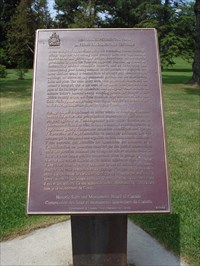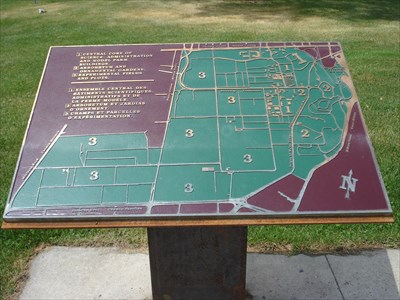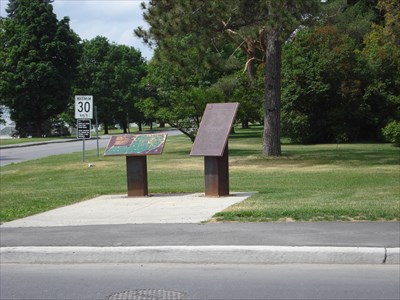


Central Experimental Farm
A rare example of a farm within a city, this outstanding cultural landscape brings together two strong 19th century interests: agricultural improvement and picturesque design. Established by the federal government in 1886, the Farm has supported Canadian agriculture by undertaking critical scientific research and by developing and demonstrating good farming methods. Its 426 hectares are organized into three distinct areas: a central core of science and administration buildings, an arboretum and ornamental gardens, and the experimental fields and plots. The Main Dairy Barn with its attached stables laid out around a barnyard, was at the heart of the model farm. The individual parts of the landscape are orchestrated into an organic whole intended to enhance nature's inherent beauty. Adopting picturesque features of a British country estate, the Farm combines large stretches of lawn and field, winding paths and pleasing water vistas. This site is a symbol of the critical role agriculture has played in shaping Canada.
From: Wikipedia
Central Experimental Farm
The Central Experimental Farm (CEF) is an agricultural facility, working farm, and research centre of the Research Branch of Agriculture and Agri-Food Canada. As the name indicates, this farm is centrally located in and completely surrounded by the City of Ottawa, Ontario, Canada. The whole farm is a National Historic Site and most buildings are protected and preserved as heritage buildings. It has an area of 4 square kilometres.
The CEF original intent was to perform scientific research for improvement in agricultural methods and crops. While such research is still being conducted, the park-like atmosphere of the CEF has become an important place of recreation and education for the residents of Ottawa. Furthermore, over the years several other departments and agencies have encroached onto the CEF property, such as Natural Resources Canada, National Defence (HMCS Carleton on Dow's Lake), and the Ottawa Civic Hospital (helicopter pad).
The CEF is bordered by the Rideau Canal (a National Historic Site as well) to the east, by Baseline Road to the south, by Merivale and Fisher Roads to the west, and Carling Avenue to the north.
Features of interest on the CEF site are:
Dominion Observatory
Canada Agriculture Museum
Dominion Arboretum
Ornamental Gardens, consisting of:
the perennial collection
the rock garden
the rose garden
the annuals garden
the Macoun Memorial Garden
the hedge collection
Fletcher Wildlife Garden
Notable office and research buildings on the CEF are:
Sir John Carling Building
Eastern Cereal and Oilseed Research Centre (ECORC)/Neatby Building
Skyline Building, 1341 Baseline Road.
The Canadian 4-H Council and Canadian 4-H Foundation
History:
The Victorian era was a time of great interest in the advancement of natural sciences and many nations built zoos, observatories, botanical gardens, and experimental farms. Canada followed suit and as the result of lobbying by John Carling, the Minister of Agriculture, and William E. Saunders, the first director of the research branch, the "Act Respecting Experimental Stations" came into force in 1886. The CEF started out with 188 hectares, chosen because of their proximity to Parliament Hill but (at that time) outside the city. Over the next few years the site was prepared by improving the land, building the facilities, and planting the Arboretum and forest belt. Early research projects focussed only on entomology, botany, and horticulture.
In 1889, lifestock was introduced to the CEF. Over the years the scope of research grew and changed, prompting a need to increase the farm's lands and buildings. The Horticulturalist's house and staff residences were removed by the 1930s (they were no longer needed since the city had grown around the farm), the forest belt gradually disappeared, and new larger centralized facilities were built, starting with the Saunders Building in 1935, followed by the Neatby Building, Geophysical Lab, Laboratory Services Building, and the Carling Building.
In 1983, the agricultural museum was created in the former Dairy Barn. The CEF was designated as a National Historic Site in 1998.
In 2003, Public Works and Government Services Canada bought the Skyline office complex on the corner of Merivale and Baseline Roads from Nortel Networks. The head offices of Agriculture Canada were relocated from the Carling Building to this facility.